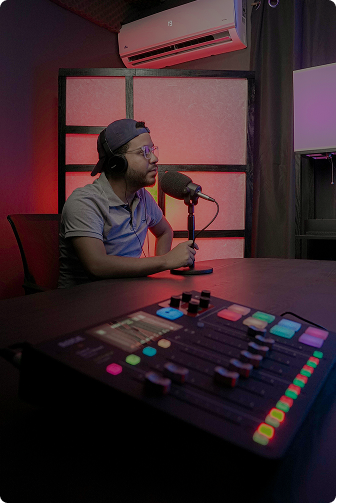Proprio Advances Surgical Precision with its AI-Powered Paradigm Platform
Proprio Advances Surgical Precision with its AI-Powered Paradigm Platform
.png)
Seattle-based medtech innovator Proprio has received its second 510(k) clearance from the US Food and Drug Administration (FDA) for its Paradigm platform, marking a significant advancement in surgical guidance systems. This clearance makes Paradigm the world’s first AI-powered system that provides real-time, radiation-free intraoperative measurements, potentially transforming how surgeons assess and adjust during procedures.
Real-Time Imaging Without Radiation
Unlike traditional surgical navigation tools that rely on intermittent X-rays or Computed Tomography (CT) scans, Paradigm uses light field technology, computer vision, and AI to generate continuous, real-time 3D visualizations of a patient’s anatomy.
Conventional intraoperative imaging techniques such as fluoroscopy and intraoperative CT are widely used during procedures to verify screw placement and anatomical alignment, especially in spinal and orthopedic surgeries. However, these methods involve ionizing radiation, which poses cumulative health risks to both patients and operating staff, including potential tissue damage and increased long-term cancer risk.
Paradigm can reduce radiation exposure by up to tenfold. The ability of Paradigm to eliminate the need for intraoperative radiation is therefore not only a technical breakthrough but a major advance in surgical safety. It allows surgeons to make data-driven decisions with greater precision, while significantly reducing the risks associated with radiation exposure.
Dr Rick Bransford, orthopedic surgeon at UW Medicine’s Harborview Medical Center, explained, “The system can tell us the trajectory and guidance to place screws with zero radiation. This is a big deal.”
Additionally, Paradigm can cut procedural time by as much as 30 minutes. Its rapid registration process, which replaces the typical 15–30-minute setup with a process that completes in seconds, adds to its time-saving edge. Moreover, the platform continuously captures rich surgical data, up to 250GB per hour, fueling ongoing innovation, surgical education, and development of next-generation AI tools.
Adoption and Clinical Data Integration
Early adopters like Duke Health and UW Medicine are already integrating Paradigm into spinal surgeries and data science initiatives. The platform allows surgeons to track surgical progress in real time, improving outcomes and reducing the likelihood of revision surgeries. Gabriel Jones, CEO and Co-Founder of Proprio, noted:
“Evolving from highly educated guesswork to data-driven certainty with intraoperative measurements is game-changing. Working with the best surgeons, Proprio is reshaping what's possible in surgery and transforming healthcare with AI.”
In addition to clinical use, Proprio has amassed a large dataset from over 50 surgeries that can inform AI model training, improve surgical education, and support further innovation.
Reimagining the Operating Room: Insights from WIRED Health 2025
At the this year's WIRED Health event, Dr Nadine Hachach-Haram, CEO of Proximie, highlighted the inefficiencies in current operating rooms, noting that approximately 75% of activities remain undocumented. She described surgical theatres as a “white space”—a vast untapped reserve of potential that, if transformed into connected and intelligent environments, could greatly improve patient outcomes.
Dr Hachach-Haram emphasized the need for real-time insights, stating, “About 4.2 million people are dying around the world within 30 days of surgery—half of these deaths are avoidable. It’s preventable if we can actually capture and understand why this is happening. We need real-time insights; intelligence in the moment.”
Proximie aims to digitize the operating theatre, offering a unified platform that connects surgeons with real-time data insights and analytics. The technology offers core functions such as remote viewing of live or recorded surgical footage, access to live expertise during procedures, and AI-powered data analysis of the operating room to identify areas of concern and help healthcare professionals cut back inefficiencies.
By analyzing over 700 hours of video footage and 10,000 data points, Proximie demonstrated that hospitals were running at about 24% inefficiency within the operating room. By adding an extra three cases a week, Proximie showed that surgical departments could accommodate an additional 9,000 procedures per year, generating an additional $90 million in the US.
Broader Implications in Surgical AI
The FDA clearance for Paradigm underscores a broader wave of innovation across surgical care. Platforms like Proximie are leveraging AI to enhance surgical workflows, documentation, and training. These advancements collectively signify a shift towards more precise, efficient, and data-informed surgical care.
Other AI-driven platforms, such as Theator, are using machine learning to analyze surgical videos, automatically detecting procedural steps and anatomical landmarks. These tools not only enhance intraoperative guidance but also offer a powerful new approach to surgical training.
Hospitals like City of Hope are implementing AI earlier in the care pathway by using patient data to predict surgical complications, recommend personalized treatment plans, and monitor recovery outcomes.
Meanwhile, the Surgical Video Platform by SDSC is creating a global, AI-powered resource that supports scientific research and education through crowd-sourced surgical footage and automated analysis.
A New Standard in Surgery
With its FDA-approved, AI-guided imaging capabilities, Proprio’s Paradigm platform is setting a new benchmark in surgical performance—combining precision, efficiency, and safety. As more institutions adopt these technologies, we are witnessing a profound shift in how surgery is practiced, taught, and optimized.
.png)
.png)
.png)

